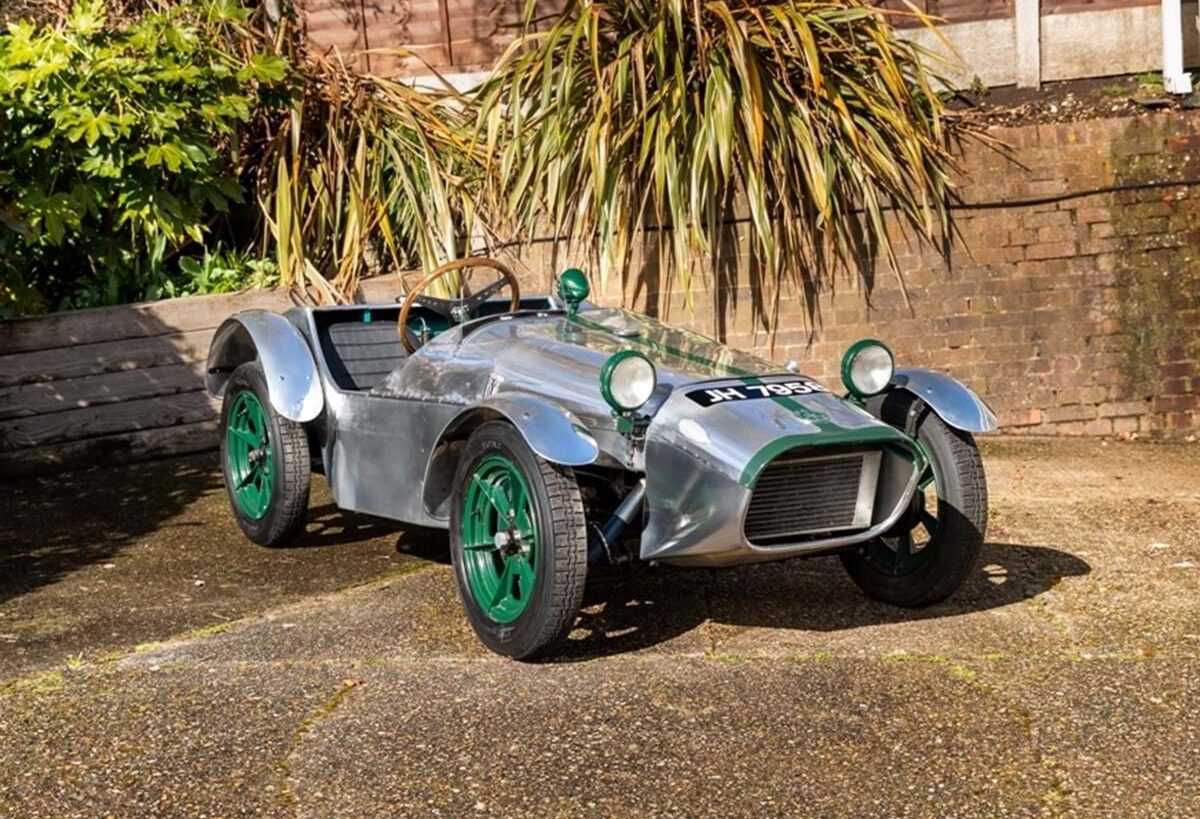Photo credit: Historics
At the end of the classic Historics auction day in Ascot, 96 out of the 141 cars offered changed hands, generating revenues of £2,386,321 or €2,700,650 (an average of £24,858 or €28,130 per car), which fell somewhat short of the estimated £3,995,000 (€4,521,225). The culprit here was simple: several over-ambitious estimations that didn’t go to plan.
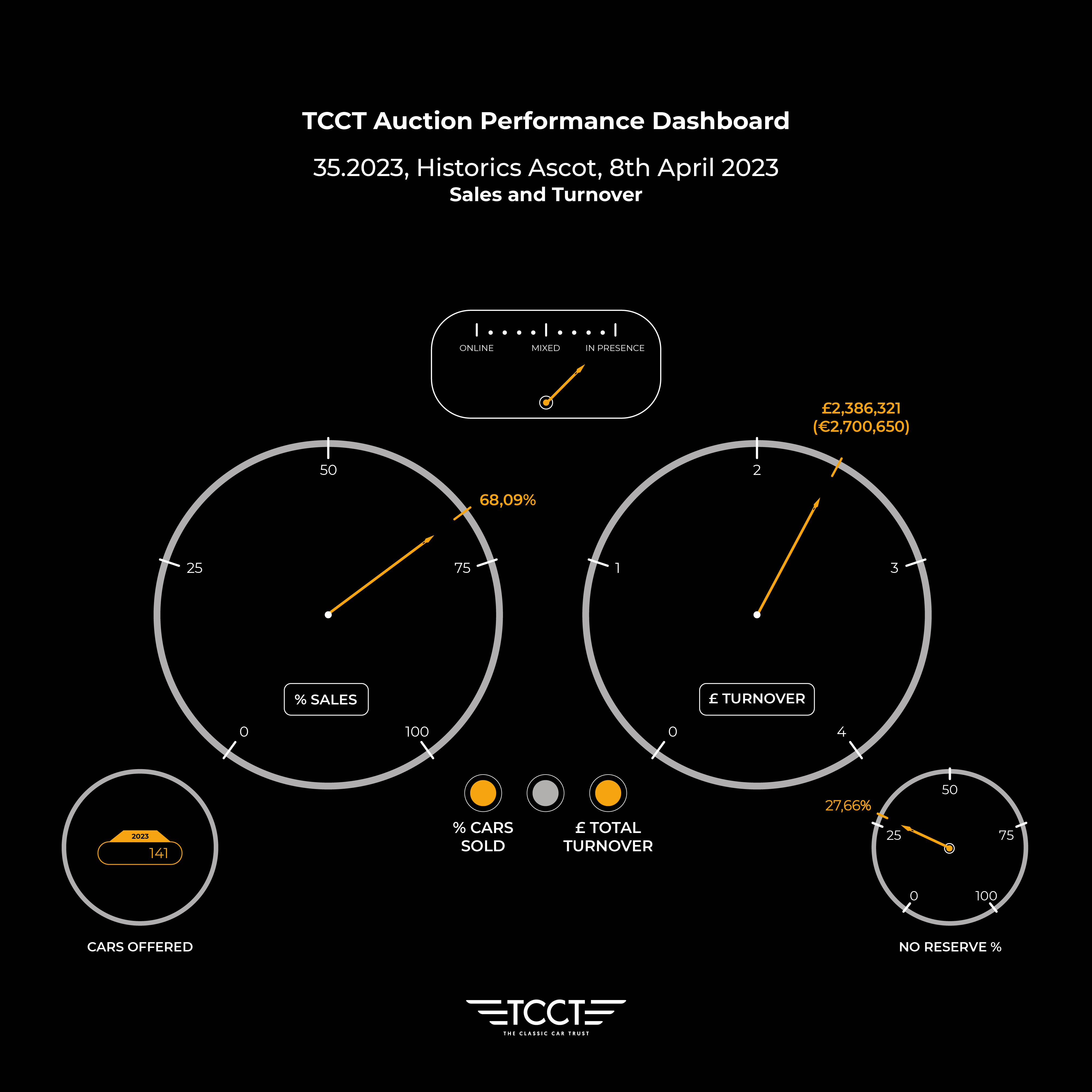
Indeed, the top lots that went unsold, including a 2009 Rolls Royce Phantom Coupé (£150,000-£190,000) and a 1960 Mercedes-Benz 190SL (£100,000-£120,000), were unquestionably overpriced.
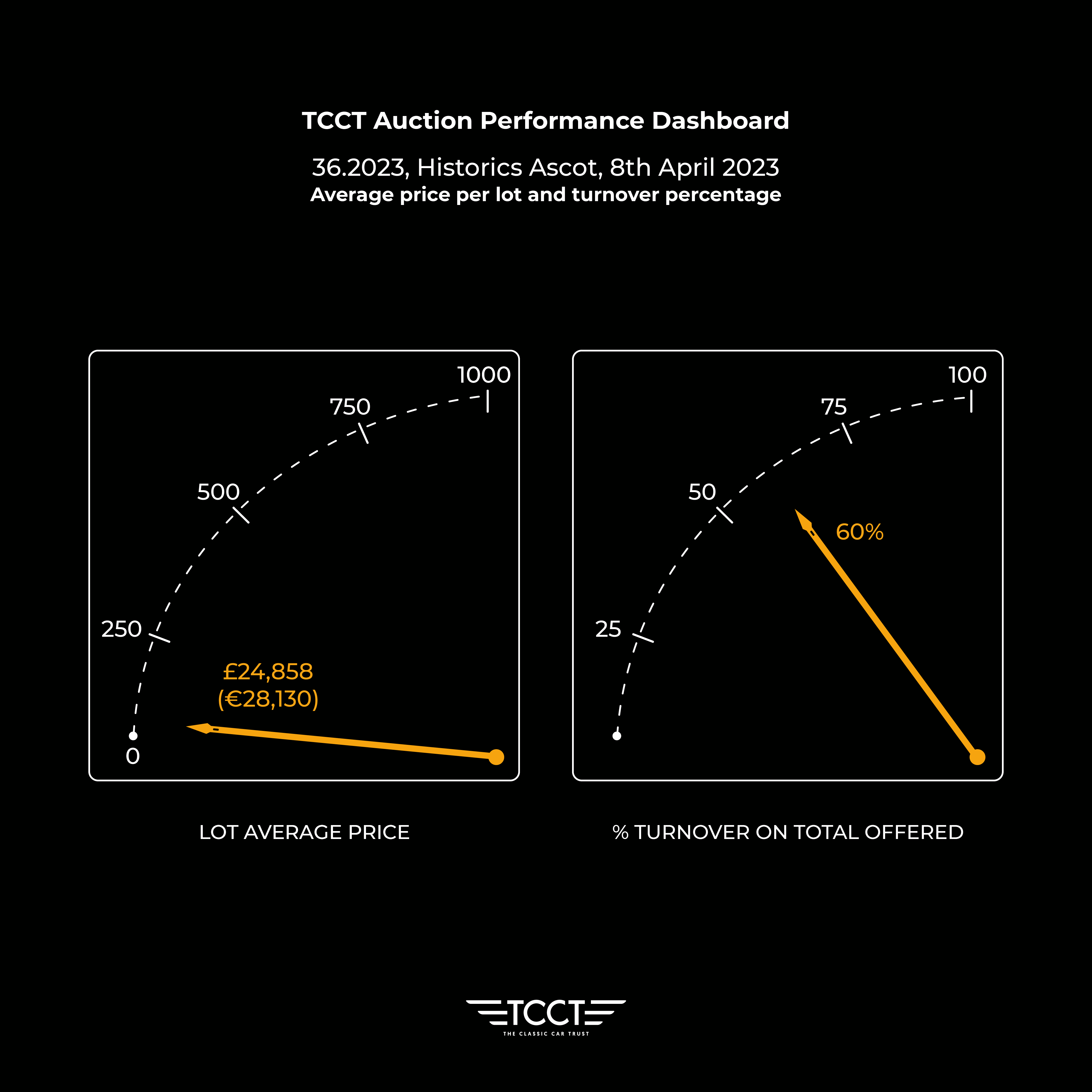
In the end, the top-selling car was a 1969 white Mercedes-Benz 280SL with tobacco interior that was offered without reserve. This car had three key features going for it: it had been owned by the same person for 41 years since 1982, it had only covered 65,513 miles, and it had a personalized license plate “868 VC”. Despite not having an estimate, its perfect condition (although preserved) fully justified the sale for £113,200 (€128,110).

Let’s begin by uncovering something interesting: anyone who grew up with James Bond films inevitably fell in love with the gadgets installed on his supercars. Without mentioning Aston Martin or Lotus, in 1997 the secret agent got behind the wheel of a “boring” BMW 750i L and managed to escape from the villain of the moment by launching missiles and… took up permanent residency in my heart. These road cruisers go for negligible prices, especially the petrol versions. At Historics, there was a 1998 model with just one owner from new, lots of “futuristic” accessories for the time – but no missiles – and left-hand drive, perfect for a trip to Europe. Offered without reserve or estimate, it sold for £4,075 (€4,610).

The next lot, however, was the one I would have taken home. The Mercedes-Benz SL 107 series rose sharply in value last year, so I’d be more than willing to place a bet or two on the following R129 series. First registered in 1990 and presented in pale metallic gold with a contrasting beige leather interior, the SL500 was the epitome of elegance. Here’s a little secret: just a few months ago, a similar one with just 2,000 km in the exact same colour combination appeared on an online auction site, selling for around $90,000. The left-hand drive one at Historics with 66,600 miles on the clock was never going to set a record but neither did the £9,056 (€10,250) paid for it (it was estimated at £10,000-£16,000).

Staying within Stuttgart, I’ll use a 1936 Mercedes-Benz 170V Roadster as an example to explain what not to do when selling a car at auction. On 11th March this year, a small British auction house called Hampson offered this car with an estimate of £75,000-£85,000, but it didn’t sell. Despite this, less than a month later, Hampson tried again with an estimate that was too close, at £70,000-£85,000. As we know, the market does not like frequent flyers, and if one is found, it is attacked. The car was eventually sold by Historics for a mere £50,000 (€56,585), indicating a significant loss in value due to poor auction strategy.
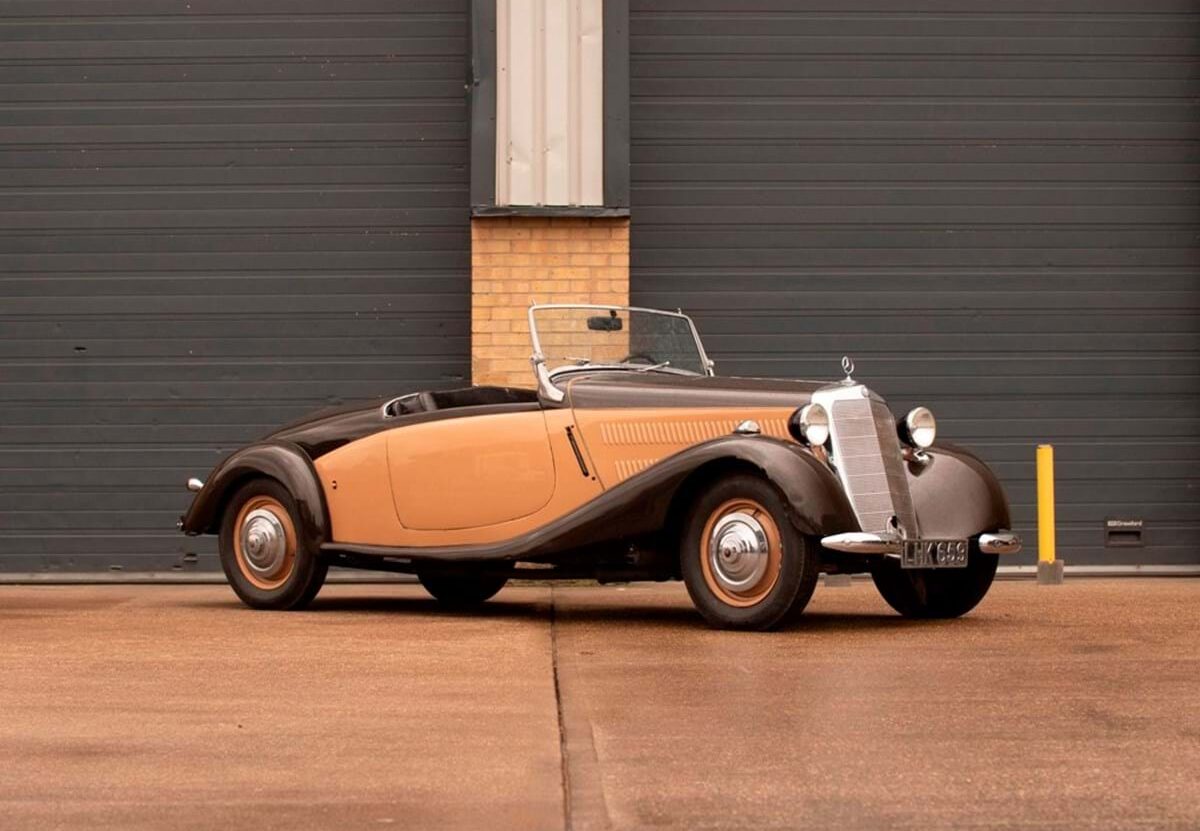
After all the German cars, let’s take a look at some interesting British ones. It was entertaining to compare two noble V12s: a 2014 Aston Martin V12 Vantage S and a 2003 Ferrari 575M with the Fiorano Handling Pack (stiffer springs, more responsive steering, etc.). The Italian had a “smaller” (so to speak) engine at 5.7 litres producing 508 bhp, while the British car offered a more impressive 6.0 litres and 565 bhp.

However, the older Ferrari had only 26,000 miles on the clock, 8,000 miles less than the Aston. The prices were similar too: £60,480 (€68,445) for the one produced in Newport Pagnell and £64,960 (€73,515) for the prancing horse from Maranello.
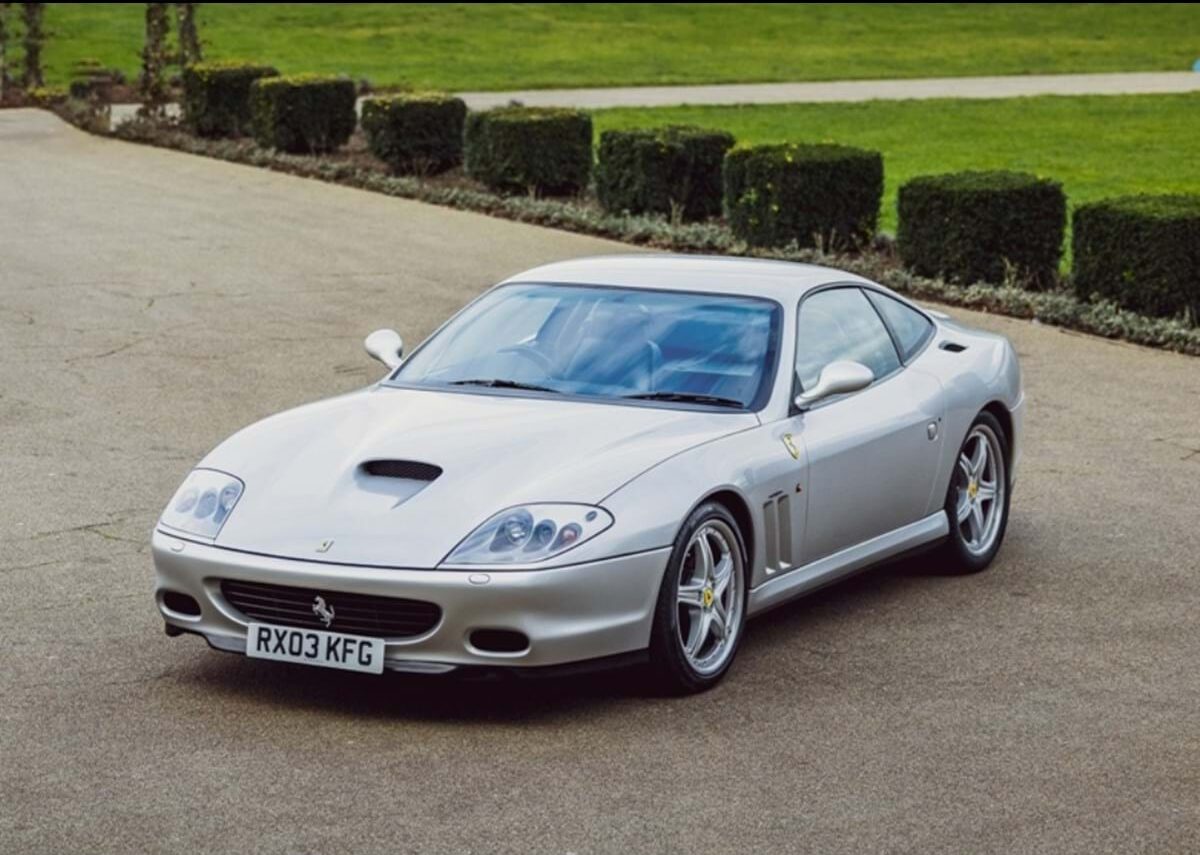
Another “buying tip” was the 1988 Land Rover Defender 110 Double Cab. Not just any Defender, though: a genius/madman had rebuilt the V8 engine and increased the capacity to 4.6 litres bringing the power output to 260 bhp, and then made a number of interesting improvements to make it one of the most fascinating Defenders on the market: an elegant interior, repainted in a magnificent Aintree Green, and featuring the latest technological innovations. To build such a vehicle in this manner and to this standard would cost in excess of £100,000 and it had only been used for 20 miles! The estimate of £68,000-£74,000 reflected a change of interest by the seller, who ultimately settled for £68,000 (€76,950).
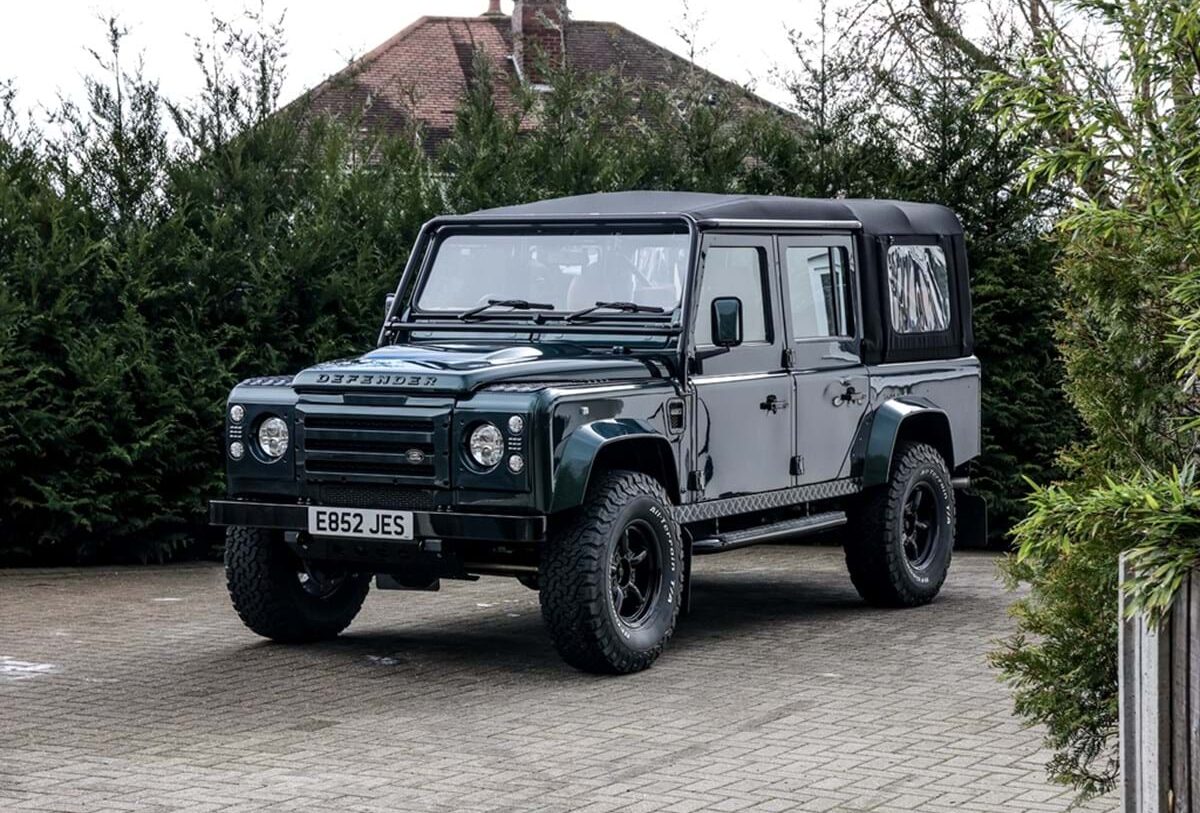
Another case: “Specials” are always viewed with suspicion. They are originally built in one way and then transformed into another (often sporty), but little else is known: what body did they start with? Who transformed them? When? These questions often go unanswered which determines the modest prices they regularly fetch. However, a lack of history should not discourage those looking for a fun car to drive to their favourite event. Take, for example, the 1934 Austin ‘Speedex’ Special. From its size, era (and chassis number), it’s obvious that it was based on a pre-war Austin Seven. Let’s skip over the “in-between” events and appreciate what it is today: an aluminium body, small, light, and a reliable 750cc engine. This particular example had not been driven on the road for some 20 years, so the estimate of £14,000-£18,000 was probably high, but at £4,760 (€5,385) it was an absolute bargain.
